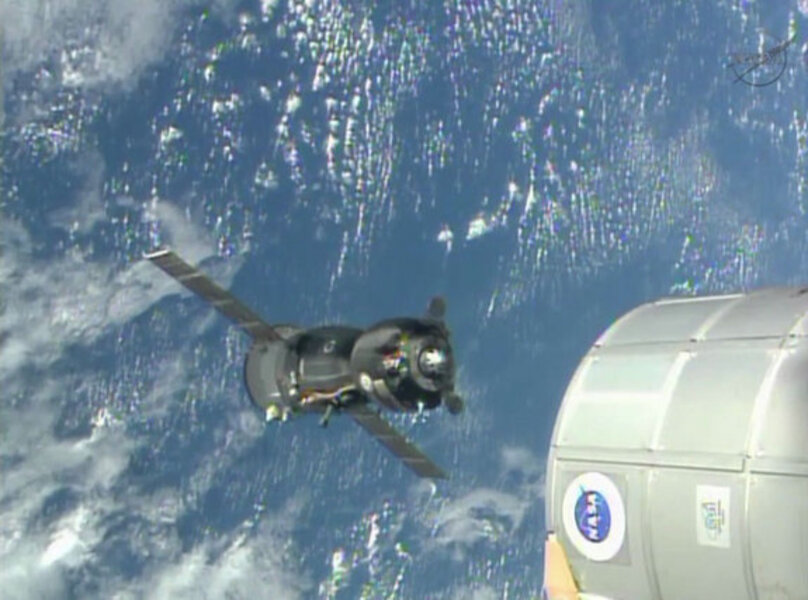A traffic jam in space? Space station set to host nine astronauts.
Loading...
It's a busy week in orbit at the International Space Station. With nine astronauts set to crowd the station this week, part of its crew moved a Russian transport vehicle to a different dock to make room for the new arrivals.
Three members of the six-person Expedition 37 climbed into the Soyuz TMA-09 spacecraft Friday (Nov. 1) to bring the vehicle from the Rassvet cargo and docking module to the Zvezda service module, which has another Russian docking port on the other side of the station. The maneuver began at 4:33 a.m. EDT (0833 GMT) and lasted 21 minutes.
Russia's Fyodor Yurchikhin commanded the vehicle, which also had NASA astronaut Karen Nyberg and European Space Agency astronaut Luca Parmitano inside. Three people must go inside the Soyuz during these kinds of transfers because if something goes wrong, NASA wants to preserve the option of making an early return to Earth with a full crew on board. [Space Station Photos: Expedition 37 Mission in Orbit (Gallery)]
The move cleared the way for three new crewmembers to arrive Nov. 7. Soyuz TMA-11M Russian commander Mikhail Tyurin, NASA astronaut Rick Mastracchio and Koichi Wakata, of the Japan Aerospace Exploration Agency, will dock at the Rassvet port six hours after launching from Kazakhstan.
Nine people in the space station will make for crowded quarters. According to NASA, this month will mark the first time since October 2009 that so many people were on the station without the presence of a space shuttle. That vehicle used to routinely dump crews of an extra six to seven astronauts on board the station for a few days. Typical space station crew numbers range between three to six people at a time.
Besides carrying the astronauts, the Soyuz will also have the Olympic torch onboard as part of a cosmic torch relay. On Nov. 9, just two days after the torch arrives on station, Russian cosmonauts Oleg Kotov and Sergey Ryazanskiy will take it outside the station as part of a spacewalk.
The torch will come back to Earth Nov. 10 when Yurchikhin, Nyberg and Parmitano fly home to cap a five-month mission in space.
Coincidentally, Yurchikhin was at the helm the last time a Soyuz moved ports on the station. The June 2010 flight went off flawlessly, but was delayed after a last-minute circuit breaker power failure in one of the space station's solar arrays. NASA usually moves these arrays out of the way to make sure that emissions from the Soyuz's thrusters don't damage the solar panels.
Yurchikhin and NASA astronauts Douglas Wheelock and Shannon Walker waited an extra orbit (about 90 minutes) inside their Sokol spacesuits. Russian mission controllers invited the crew to take off their gloves if they wanted to get more comfortable, but Yurchikhin said everyone could wait it out.
Follow Elizabeth Howell @howellspace, or SPACE.com @Spacedotcom. We're also on Facebook and Google+. Original article on SPACE.com.
- The International Space Station: Inside and Out (Infographic)
- Cosmic Quiz: Do You Know the International Space Station?
- Spacewalk Photos: Cosmonauts Work Outside Space Station (Aug. 22, 2013)
Copyright 2013 SPACE.com, a TechMediaNetwork company. All rights reserved. This material may not be published, broadcast, rewritten or redistributed.







